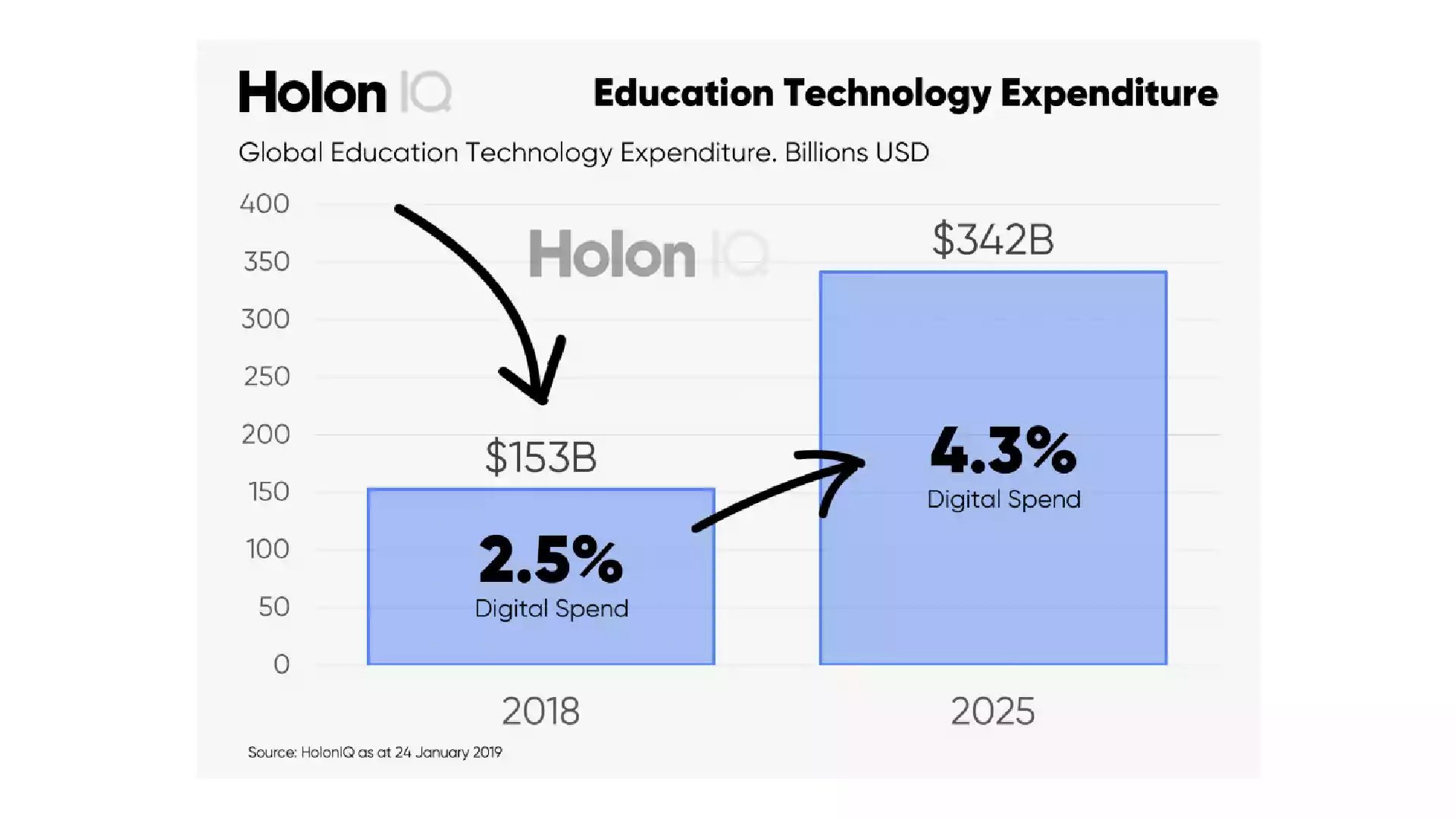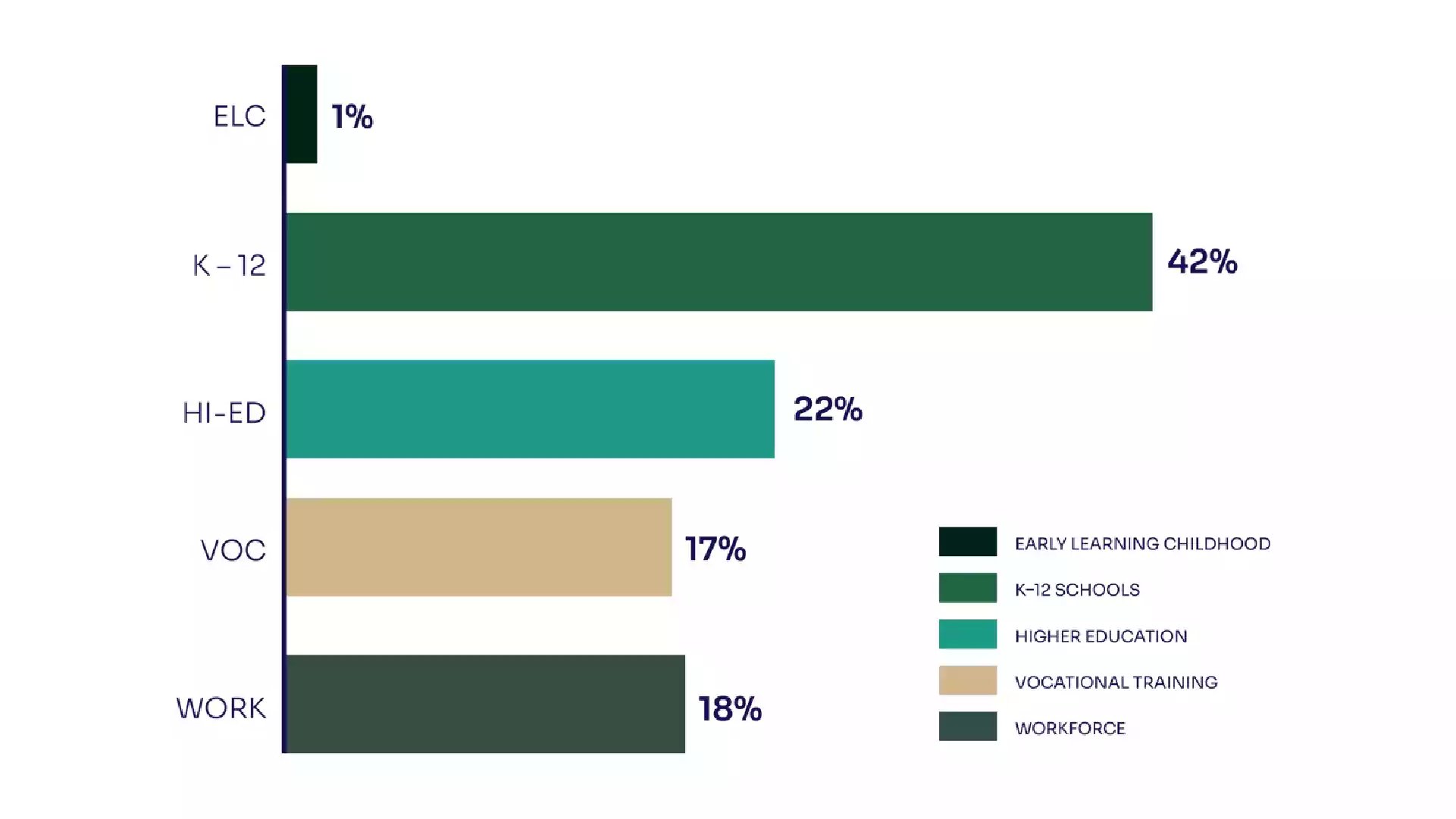As much as Oppida wishes the opposite were true, the effects of COVID-19 are still very much...
The future of education worldwide: Trends and predictions for the edtech revolution

In our contemporary landscape, technology's reach extends into every nook of our lives, education being no exception. The integration of Artificial Intelligence (AI) into education systems by EdTech startups has the potential to transform the way humans teach, learn and operate the education system. However, this transformation is not occurring at the same pace all over the world. Let's explore the complexities of the progressing EdTech revolution and its potential impact on the future of education globally, particularly within the next decade.
Balancing innovation and practicality in the edtech revolution

The common notion of classrooms morphing into a sci-fi spectacle with holograms and robot tutors might just be a tad too optimistic. While EdTech is certainly changing traditional teaching methods, the global reality seems more down-to-earth than a futuristic blockbuster. The global education landscape is vast and diverse, encompassing various economic, cultural, and infrastructural contexts. In many regions, the current focus remains on addressing the basic educational needs rather than adopting flashy, high-tech solutions. As we navigate the EdTech revolution, the future we envision might be a balance between innovation and practicality, ensuring that advancements meet the diverse needs of students around the world.
The global edtech landscape
In 2022, AI in education was valued at 4 billion USD. Now, hold on tight because experts are predicting it'll skyrocket to a whopping 30 billion USD by 2032. (Global Market Insights) This rapid growth raises important concerns about the sustainability of this industry and whether it is outpacing our education systems. While the statistics show a scenario of rapid expansion, it is crucial for us to reflect on whether this growth signifies progress or presents a potential obstacle.
Global edtech funding trends
When we look at the broader financial landscape, global education expenditure is expected to reach an enormous 10 trillion USD by 2030. (HolonIQ) Now, when we zoom into the world of EdTech, the spending seems like the quiet kid in the class—hovering around 2% to 4% from 2018 to 2025. Although there is an upward trend in EdTech spending, the important question that remains is whether it is enough to bridge the gap between the potential impact and the actual impact on education systems.

Image by HolonIQ
Regional disparities in edtech advancements
Digging deeper into the global EdTech landscape, let's focus on Australia. Among Australia's EdTech companies, 42% centre their attention on K-12 customers. (EduGrowth)

Image by EduGrowth
This raises questions about the type of products they offer. Do these companies provide revolutionary AI tools or simply offer basic Learning Management Systems (LMSs) and e-learning technologies? The emphasis on K-12 customers may suggest a predominant use of conventional tools rather than cutting-edge AI solutions. This challenges the assumption that increased investment in EdTech, particularly in wealthier countries, will lead to significant transformation in education over the next decade.
Institutional hurdles: Curriculum review and policy challenges
In Australia, the six-year curriculum review cycle reflects the cautious pace of change within sizable educational institutions. (ACARA) The intricate policies and bureaucratic hurdles could impede rapid advancements, particularly in the field of educational technology. The Australian Human Rights Commission's inquiry, initiated in response to the AI revolution, underlines the need to address fundamental issues, from privacy concerns to algorithmic bias and discrimination. (Australian Human Rights Comission) Resolving these issues alone will be a lengthy undertaking. The protracted nature of these changes is often rooted in the fact that decisions shaping education are made by individuals deeply entrenched in existing systems, making it challenging to envision and implement entirely new frameworks integrated with advanced AI and technology. This resistance to change, grounded in long-standing educational experiences, contributes to the time it takes to embrace a radically different educational landscape.
Educational disparities: The urgency of edtech
The need for AI-driven educational technology is evident as we confront a worldwide education crisis. Despite the progress made by countries such as China and the USA, there are still over 244 million young people around the globe who struggle with basic reading and writing skills. (Thinkific) The call for EdTech to assist nations grappling with fundamental learning requirements is crucial. The question arises: Will EdTech companies prioritise scaling their business to assist struggling nations, narrowing the technology and education quality gap between affluent countries and the rest of the world?
EdTech startups: Revolutionising education globally and bridging gaps
EdTech startups are crucial in reshaping global education by using technology to improve worldwide access. In areas lacking EdTech infrastructure, these startups provide innovative solutions to meet the growing demand for quality education. As they expand into underserved regions, they contribute to a global shift towards more inclusive and advanced educational systems. Picture EdTech not just transforming classrooms but revolutionising how we learn globally.
As we navigate the EdTech revolution, the road ahead brings both promise and challenges. The global scene reveals differences, with speedy progress in EdTech startups contrasting with slower advancements in larger institutions and countries trailing in the EdTech revolution. This invites us to ponder the delicate balance between innovation and inclusivity. As we picture the future of education, it's crucial to weigh not just the technological wonders but also the societal impact and the urgency to close educational gaps globally.


